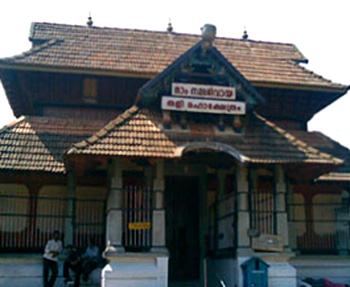 Tali originally meant a Shiva temple; there is a Krishna temple also here on the north-east side. Shiva faces east and Krishna west. Both are independent temples with separate srikoils, nalambalams and flag-staffs. But the Shiva shrine is very ancient and the Krishna temple appears to be a later addition.
Tali originally meant a Shiva temple; there is a Krishna temple also here on the north-east side. Shiva faces east and Krishna west. Both are independent temples with separate srikoils, nalambalams and flag-staffs. But the Shiva shrine is very ancient and the Krishna temple appears to be a later addition.
The central shrine of Shiva is quadrangular in shape with double prasadas or storeys. It has stone sculptures of excellence around its exterior sides. Inside there are three rooms. The Shivalinga, about two feet in height, is in the innermost recess. It is believed to be swayambhu or self-born. Legend has it that the sage Parasurama propitiated Siva who agreed to remain at the Tali temple in the form of a linga. It was Yogi Narayana, who is said to have performed kalasam or purificatory ceremonies and installed other deities.
The temple also contained some notable examples of old workmanship in wood illustrating various puranas. The scenes and figures are boldly designed expressive of high emotions, of throbbing life and vigour.
In front of the srikoil there is the mukhamandapa with exquisite wood carvings over the ceiling. There is the usual image of Nandi. To its south is the Ganapati shrine. There is also another Balaganapati in the north-east. Ganapati homam is famous in the temple.
Outside the nalambalam there is a small shrine for Narasimha facing west and a Sasta shrine in the north. In the north-west all the family deities of the Zamorin are kept in a small shrine and worshipped. This contains the images of Lord Krishna, Devi and Ganapati as also a Shivalinga and a salagrama.
The beautiful image in the Sri Krishna shrine in the north-east side is a four-armed one with conch, disc, mace and lotus. A modern painting of Anantasayanam adorns the wall of the vatilmatam.
This article is a stub. You can enrich by adding more information to it. Send your Write Up to content@indianetzone.com





















